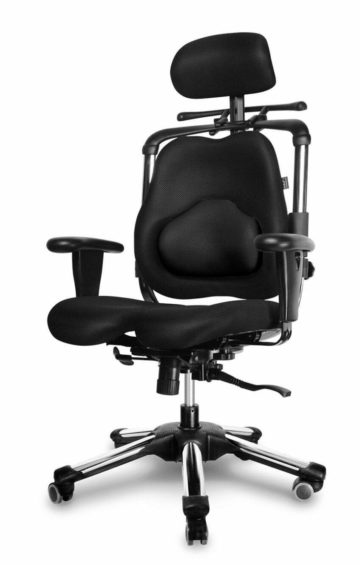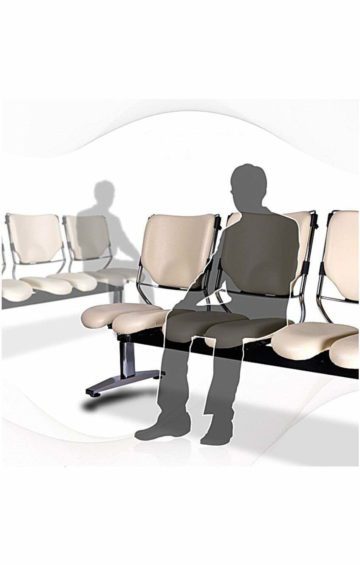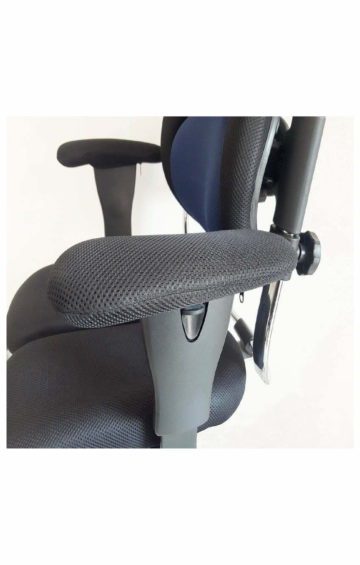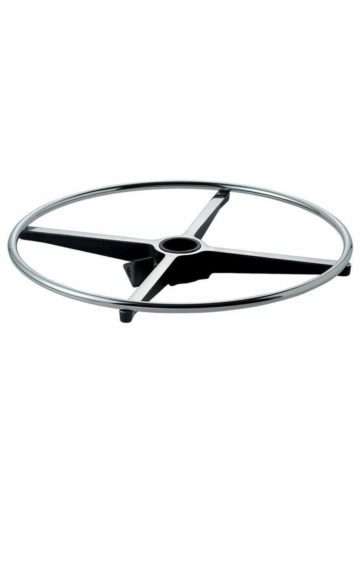Sitting Properly
Sitting properly at a desk plays an important role in health, well-being and maintaining consistent work performance. If you sit incorrectly, you get back pain and tension more easily. But how does “sitting properly” work at all?
How do you sit properly?
Permanent sitting is a strain on the back – and more and more office workers are sitting sick. Complaints about frequent or constant back pain are increasing, as the Federal Association of Company Health Insurance Funds found in a long-term comparison. Tension or even herniated discs can at best be avoided – or at least prevented – by sitting properly.
Correct sitting and movement is one of the most important preventive measures in office and computer work. Sitting correctly describes the ergonomically correct posture of the body on a chair. Orthopedic surgeons recommend sitting as upright and relaxed as possible, with the thighs, lower legs and elbows forming a right angle, the propped arms relieve the chest and the entire seat area being used. Armrests are just as recommended as palm rests and footrests. When the arms rest loosely on the backrests, the shoulder area is relieved. The palm rests in front of the keyboard also protect the shoulders and neck. And footrests can compensate for the height difference to the floor for smaller people if the table cannot be adjusted. In addition, footrests relieve the leg muscles as well as the back. However, a rigid, tense posture with a hunched back should be avoided for hours. Better: Active sitting and preventing one-sided strain on the spine.
Movement is the be-all and end-all
The spine feels most comfortable in its natural position of the double S curve. The cervical spine and the lumbar spine each curve forward, the thoracic spine and the sacrum and coccyx curve backwards. In this form, the spine is relieved and can optimally absorb shocks. The back should therefore assume this position as often as possible in everyday life. When sitting, this means raising your upper body and tilting your pelvis slightly forward. Pelvis, chest and head should be aligned in a straight line. However, many people find this posture too exhausting in the long run and tend to collapse again.
Staying cramped in the supposedly correct sitting position, but that is also not back-friendly. Rather, the posture should change every now and then. Active, dynamic sitting is the motto. As a result, the intervertebral discs are better nourished, the blood circulation in the legs and pelvis is promoted and the back muscles are strengthened. So in between lean back, turn to the side, sit upright again or bend forward. An ergonomic office chair with a dynamic seat and backrest that supports an upright posture, strengthens the back muscles and helps the body to move naturally and maintain a healthy posture when sitting is ideal. Work chairs with the “dynamic sitting” function are therefore particularly back-friendly and at the same time prevent back problems. Because the seat and backrest move with it and support the spine and pelvis and encourage the body to sit properly.
Our Customers
























